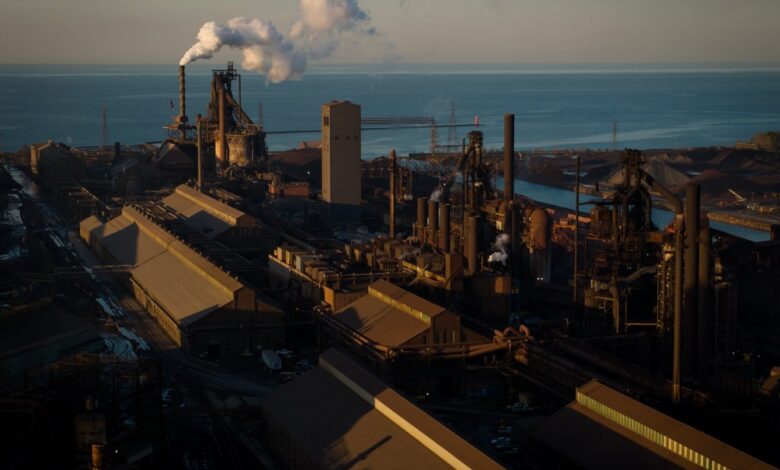Northwest Indiana residents see green steel as future of Gary Works

Just about three months after a partnership between Nippon Steel and U.S. Steel was finalized, some Northwest Indiana activists are asking the corporations to consider a green steel mill in Gary.
In an email to the Post-Tribune, Terry Steagall, a Highland resident and retired steelworker, expressed his desire for direct reduction furnaces, which he considers to be a more environmentally and economically friendly alternative.
When the partnership between Nippon Steel and U.S. Steel was announced, the Japanese company planned to invest up to $4 billion in a new steel mill if the deal went through, Reuters reported in May.
Steagall wants to see the facility built in Gary, and he wants it to use direct reduction iron furnaces.
“If they’re going to spend about $4 billion for a new technology steelmaking facility, they should look at Gary Works,” said Steagall, who is also a member of the Gary Advocates for Responsible Development’s Green Steel Committee. “It’s important that (Gary Works) transitions to the new technology to get rid of the pollution. … It could be a win-win if there’s a good location, and it’s a good investment in Gary.”
Steagall believes the area of land in Gary near Buffington Harbor could sustain a new steel mill, and it has multimodal access, city interest and the potential for tax revenue.

Steagall worries about the future of steelmaking in the region if Gary Works does not move away from blast furnaces. A spokesperson for U.S. Steel previously told the Post-Tribune that blast furnaces create about 30% of steel, and electric arc furnaces use a feedstock produced through direct reduction to make finished steel.
U.S. Steel was unable to immediately provide a statement Friday.
A previous U.S. Steel statement to the Post-Tribune said that the company is exploring different technologies to make steel in cleaner ways “as part of our commitment to net zero by 2050 and to reduce our greenhouse gas emissions intensity by 20% by 2030.”
“We are on track to meet these goals,” the previous statement said. “We have partnered with CarbonFree to explore a carbon capture and utilization project (that) would help us reduce greenhouse gas emissions by converting emissions to calcium carbonate, which is used in a variety of products for consumers and industry. Our more than 3,400 Gary Works employees put safety and environmental compliance first, with an environmental compliance rate exceeding 99% that reflects the fact that they are proud to be part of the Northwest Indiana community we call home.”
Gary Mayor Eddie Melton’s spokesman was unable to respond to a request for comment.
A partnership between Nippon Steel and U.S. Steel was finalized in June, making the combined company the fourth-largest steelmaker. A Nippon executive said in late 2024 that Gary Works would receive about $1 billion as part of the deal, some of which would be dedicated to relining the blast furnace.
Carolyn McCrady, a member of GARD and its Green Steel Committee, said Melton has been receptive to the organization’s concerns with blast furnaces and the desire for green steelmaking.
McCrady is worried for the future of Gary Works in the city because it relies on a blast furnace. She’s worried the facility will shut down if the technology becomes obsolete.
“The city of Gary will then be settled with a seven-mile stretch of abandoned and polluted steel mill property that sits right between the city’s core and its Lake Michigan shoreline,” McCrady said. “As a member of GARD, I am optimistic that the leadership and steel mill will make the right decision and continue to keep Gary Works operating under new technology that will be more efficient, that will be less costly, and will benefit our community.”
GARD has connected with Nippon to talk about the future of steelmaking in Gary, McCrady said. Melton arranged the group’s meeting with Nippon, she added.
Steagall encourages corporations and leadership to continue thinking about Gary residents as steelmaking grows and changes.
“We’re not planning for the future of other places,” he added. “If we’re going to take Gary Works into the future, we need to invest in new technology at (the facility).”
Credit: Source link






